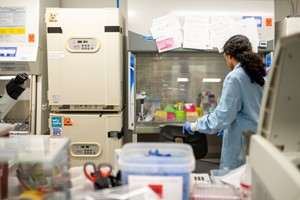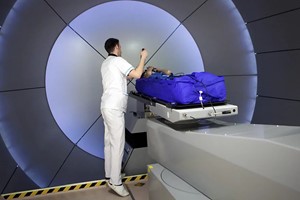The demand for robotic surgery has been well-established, but existing systems are often prohibitively expensive to purchase, operate, and maintain. Advanced Micro Devices Inc. (AMD) asserts that its innovative technologies can help mitigate these costs through partnerships with leading surgical robot manufacturers.
According to the National Library of Medicine (NLM), approximately 644,000 robotic surgeries were performed in the United States in 2021, with projections indicating this number could reach 1 million by 2028. Furthermore, the global market for robot-assisted surgery is expected to surge to $83 billion by 2032, according to predictions from Noah Medical.
AMD's Strategic Position in Healthcare Technology
AMD is rapidly emerging as a significant player in healthcare technology. Subhankar Bhattacharya, AMD’s lead for healthcare and sciences, highlights the company’s substantial growth in this sector. “We have a diverse portfolio of processors, including FPGAs, GPUs, CPUs, SoCs, PLCs, and programmable I/Os,” he noted. These technologies find applications across various industries, including industrial automation, automotive, gaming, and increasingly, healthcare.
Bhattacharya has extensive experience, having worked at Intel, Sun Microsystems, and PMC. He has focused on software-as-a-service (SaaS) solutions for hospitals, collaborated with Novartis on medical devices, and contributed to healthcare and cybersecurity efforts at GE Digital. Following AMD’s acquisition of Xilinx in 2022, he has recognized the potential of high-performance computing in robotic surgery.
Regulatory Changes and AI Integration
Recent regulatory changes have opened opportunities for AI in medical devices. “The FDA was previously conservative, but it has initiated a new group focused on software as a medical device,” Bhattacharya explained. This shift allows for greater integration of artificial intelligence in various stages of the industry, from devices to electronic case reporting and surgical robots.
The COVID-19 pandemic has significantly accelerated the adoption of telemedicine and robotic surgery, altering the market landscape. Bhattacharya noted that trends in point-of-care (PoC) AI and remote patient monitoring surged during the pandemic. “People witnessed firsthand how effective point-of-care ultrasound could be in saving lives,” he remarked.
AMD’s collaboration with Clarius, which developed a handheld device with AI capabilities, enables local physicians without sonography experience to assess patients for potential cancer, leading to timely referrals to hospitals. This innovation underscores how AMD’s technologies empower healthcare providers in various settings.
Innovations in Robotic Surgery Technology
AMD is developing adaptive system-on-chips (SoCs) that facilitate low-latency and high-speed data processing. “Once AI developers have trained their models, they can achieve much more with inferencing on smaller devices,” Bhattacharya stated. In robotics, AMD has been a frontrunner, collaborating with Intuitive Surgical since 2010. The company’s Xilinx division played a vital role in designing the second-generation da Vinci robotic surgical system, which had over 7,500 units in use across 69 countries last year.
Intuitive Surgical has built a significant intellectual property portfolio, enhancing the design and reuse potential of its technologies. The latest da Vinci 5 model has achieved FDA and European CE clearance, marking a major advancement in surgical robotics.
AI's Role in Enhancing Robotic Surgery
Robot-assisted surgery offers advantages, including smaller incisions and quicker recovery times. The FDA's preferred strategy involves leveraging AI to enhance productivity while minimizing risks. “We still see a lot of assistance rather than AI making critical decisions,” Bhattacharya clarified. AI and machine learning can improve the quality of displays in surgical robots and provide guidance during procedures.
As AMD continues to innovate, its role in advancing robotic surgery and healthcare technology is expected to grow significantly. The integration of advanced processors and AI could revolutionize the industry, ultimately leading to improved patient outcomes and expanded access to robotic surgical procedures.
By Eugene Demaitre










